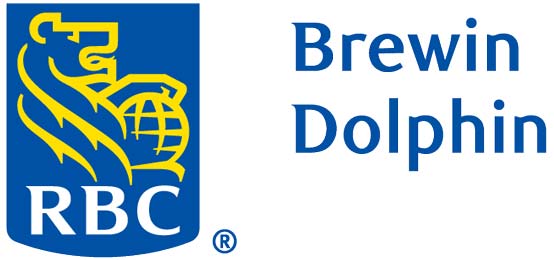This month:
Expert investment views:
The risk of ‘sticky inflation’ is discussed as central banks gear up to make crucial interest rate decisions in the coming months
One wealth manager dives deep into the AI boom and how investors should look to play the technology sector generally going forward
Commodities are highlighted as trading cheaply compared with equities and presenting an opportunity to prepare portfolios for higher and more volatile inflation
Featuring this month’s experts:



1. Rate cut expectations
There is likely to be more stability in speculation around interest rates cuts expected for this year as we enter the second quarter, as central banks provide more guidance. It is likely that the ECB and potentially the BoE will start reducing rates before the Fed, as the higher rates have resulted in more material impacts on those regions than in the US, where the economy remains strong.
Recent comments and minutes from the rate-setting Federal Open Market Committee (FOMC) suggest the focus has turned to growth indicators rather than inflation, with concerns around making sure the economy does not slow too fast. Employment numbers will be the key indicator to watch because, even though they are a lagging indicator of the economy, they have the most significant impact on overall future economic momentum.
It should be noted that the risks of sticky inflation are higher than the chances of undershooting on inflation, and this is a risk for policy decisions over the next few months
Central banks have highlighted that they are more comfortable about the continuation of the falling inflation that we have been experiencing. But are not convinced yet that it will sustainably move back to target levels. Inflation is still too high and stickier results from here will see central banks put it back into focus and will delay rate cut expectations. It should be noted that the risks of sticky inflation are higher than the chances of undershooting on inflation, and this is a risk for policy decisions over the next few months.
If the economy gathers momentum from here, these risks are amplified – and rate cut expectations will quickly reduce. This risk is more important in the US, where growth is strong, and less so for Europe and the UK, which is why there is the likelihood that European central banks will cut rates independent of the Fed.

Patrick Farrell
Chief Investment Officer at Charles Stanley
2. Chips with everything
Stock markets were electrified in the first quarter of the year with intense interest in all things related to Artificial Intelligence (AI).
AI, which simulates human intelligence through machines, seems to have limitless potential. It’s already transforming manufacturing with automated machines that perform craftsmen’s tasks. In healthcare, AI may diagnose illnesses while robotic devices perform minimally invasive surgery, reducing hospital stays and recovery times. Meanwhile, office tools like Microsoft’s Copilot are set to revolutionise the workplace.
However, predicting how and when AI will truly reshape our world is challenging. If the bulls are correct, companies will embrace AI to cut costs and boost profitability while those that fail to invest in AI face a competitive disadvantage.
Of course, we’ve been here before with the tech boom at the turn of the millennium, but the dominant companies like Microsoft, Cisco and Intel weren’t necessarily the biggest winners.
For every Facebook there’s a Myspace, and for every Google Chrome, a Netscape. The largest company in twenty years might not exist yet.
A balanced portfolio should have exposure to technology given it makes up over 25% of global markets, but also quality companies that will use AI to boost profitability
Today’s valuations aren’t at the extremes we saw in 2000 – perhaps this is more like 1996, during the early stages of the tech boom. A major driver is the expectation of an enormous upgrade for computers, chips and software to maximise AI’s potential, underpinning returns for many companies.
However, maintaining high growth can be challenging. Profits growing at 50% per year is unsustainable long-term, and missing targets can trigger severe market reactions.
A balanced portfolio should have exposure to technology given it makes up over 25% of global markets, but also quality companies that will use AI to boost profitability. This way, investors can participate in the AI tech boom while reducing the risk of relying on a single sector.
As for AI, where will it all end? Hopefully, the defence sector will be at the back of the queue in allowing computers to make autonomous decisions…

Rob Burgeman
Investment Manager - Divisional Director at RBC Brewin Dolphin

Top Tip
This month’s wealth management experts touch on one of the most important elements of running investing portfolios effectively: asset allocation. The proportion of your funds which you invest in different asset classes, and then to different markets, sectors, types of instrument and so on is one of the most important determinants of success. The issue is that the right answer is different for each individual, and is likely to change significantly over time as your situation and market conditions evolve.
If you are thinking that that sounds like a complex problem to unpick on your own, you are not wrong. Coming up with the ideal portfolio for your risk profile, ambitions and time horizon is one of the most valuable parts of deploying a professional for your investments. Why not let us arrange some no-obligation discussions with leading firms so they can explain the expertise they can bring to bear for you?

Lee Goggin
Co-Founder
3. Material world
So, could commodities help protect portfolios today?But commodities generally perform well, with an average real return of 14% a year. And, even after their recent strong rally, commodities look as cheap relative to US equities as they have since 1970. So, could commodities help protect portfolios today? The key: holding a diversified basket of commodities, not just one. The Ruffer portfolio currently has 10% across oil and gold mining equities, copper and silver bullion exposure. Investors have been loading up on bonds and growth equities in the hope of imminent rate cuts. But, if rates stay higher as the US economy motors on, the next market winners could look very different. Whilst leaving the herd always feels risky, we believe it is vital to successfully navigating the next phase in markets.
The key: holding a diversified basket of commodities, not just one

Jasmine Yeo
Fund Manager at Ruffer LLP
Important information
The investment strategy and financial planning explanations of this piece are for informational purposes only, may represent only one view, and are not intended in any way as financial or investment advice. Any comment on specific securities should not be interpreted as investment research or advice, solicitation or recommendations to buy or sell a particular security.
We always advise consultation with a professional before making any investment and financial planning decisions.
Always remember that investing involves risk and the value of investments may fall as well as rise. Past performance should not be seen as a guarantee of future returns.
Find the Right
Wealth Manager -
in Under 3 Minutes
Start your free search
Join thousands of individuals who've used our tool to find trusted, FCA-regulated advisers to maximise their wealth.
- No fees, no obligation
- Private & secure matching in minutes
- Trusted since 2012 by thousands of clients






